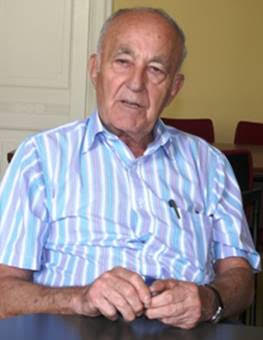
THE VOICE OF INTERNATIONAL LITHUANIA
|
VilNews has its own Google archive! Type a word in the above search box to find any article.
You can also follow us on Facebook. We have two different pages. Click to open and join.
|
Archive for September, 2012
- Posted by - (0) Comment

Baltic exports to Russia
have jumped to the highest
in more than a decade
Estonia’s biggest liquor producer has no time for political squabbles as sales to Russia help it plot a safe passage through the euro-area debt turmoil.
“It would be very shortsighted if we turned our backs on Russia,” Liviko AS’s Chief Executive Officer Janek Kalvi said in a phone interview from the capital, Tallinn. “Especially if you look at what’s been happening in Europe.”
Baltic exports to Russia, now Estonia’s top destination for goods, have jumped to the highest in more than a decade, fueling Europe’s fastest growth after the region that also includes Latvia and Lithuania endured the world’s worst recessions after Lehman Brothers Inc.’s 2008 collapse. The surge has defied strained ties over issues from Soviet occupation to energy imports and has helped drive Baltic debt yields to record lows.
Read more...
- Bookmark :
- Digg
- del.icio.us
- Stumbleupon
- Redit it
- Posted by - (0) Comment
Record harvest in
Lithuania this summer

Lithuania plans to boost its grain exports to 2.5 million tons this year after a record harvest, 15min reported, citing Adomas Grigaitis, head of grain exporter Litagra Prekyba.
Lithuania may see a record grain harvest of as much as 4.5 million tons this year, or 1 million tons more than the average in previous years, the newspaper said.
- Bookmark :
- Digg
- del.icio.us
- Stumbleupon
- Redit it
- Posted by - (0) Comment
 |
VilNews section 4: FROM OUR ARCHIVES |
 |
JANUARY 2006 Andrius Kubilius LITHUANIA NEEDS A VISIONARY STRATEGY Read more... |
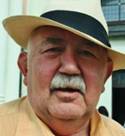 |
NOVEMBER 2004 Professor Donatas Katkus THE MUSIC MAN Read more… |
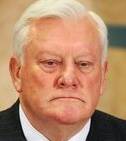 |
MARCH 2005 PM Algirdas Brazauskas MASTER OF THE GAME Read more… |
 |
SEPTEMBER 2005 Rolandas Paksas NEVER SAY NEVER Read more… |
 |
DECEMBER 2005 Arturas Zuokas I AM BEING STABBED IN THE BACK Read more… |
- Bookmark :
- Digg
- del.icio.us
- Stumbleupon
- Redit it
- Posted by - (0) Comment

Klaipėda has got a crisis centre for women
that is probably going to be a pioneering
example for such centres worldwide
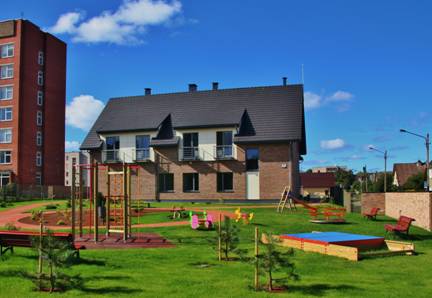
Text and photos: Aage Myhre
Editor-in-Chief/M.Sc. of Architecture
aage.myhre@VilNews.com
Let me today take you to the new crisis center for women in Klaipeda. The building opened a few days ago, but still there is no furniture and staff in place, hence the centre will be ready to accommodate 'patients' only later in the fall. I myself have been involved in this project for more than three years now, and I wanted to share with you some thoughts on how this center has evolved and today stands out as something rather exceptional, in Lithuania but also on an international scale.
When we started the project, there were three main messages we wanted the center to signal to women who would come here to get help in an emergency situation:
• Here you are in safety
• Here you will find warmth, care and understanding
• Here you will be taken care of by professionals
- Bookmark :
- Digg
- del.icio.us
- Stumbleupon
- Redit it
- Posted by - (1) Comment

Klaipėda has got a crisis centre for women
that is probably going to be a pioneering
example for such centres worldwide

Text and photos: Aage Myhre, Editor-in-Chief/M.Sc. of Architecture
aage.myhre@VilNews.com
Let me today take you to the new crisis centre for women in Klaipeda. The building opened a few days ago, but still there is no furniture and staff in place, hence the centre will be ready to accommodate 'patients' only later in the fall. I myself have been involved in this project for more than three years now, and I wanted to share with you some thoughts on how this centre has evolved and today stands out as something rather exceptional, in Lithuania but also on an international scale.
When we started the project, there were three main messages we wanted the centre to signal to women who would come here to get help in an emergency situation after having been exposed to violence at home or elsewhere:
1. Here you are in safety
2. Here you will find warmth, care and understanding
3. Here you will be taken care of by professionals
I believe wise architecture can be tremendously helpful in facilitating for the noble cause of a centre like this, make it much more than just a building, rather a lighthouse for many women and children who will be coming here for protection, therapy and help, hopefully making them feel stronger and
The main three factors mentioned above should in my opinion all be strictly observed while creating a crisis centre for women. Below some of the main solutions we have done for the Klaipeda centre in order to find concrete, physical answers to these three factors:
1. SAFETY
· The Klaipeda centre has been designed with strict safety and security in mind. The ‘patients’ coming here will be women, sometimes with children, who have been exposed to terrible violence in their homes or elsewhere, and they need to feel totally safe as soon as they arrive at the centre.
· There is also a risk that the person who commits the violence crime will try to follow them into the centre to continue the abuse, and it has therefore been utterly important to design the building and outdoor areas in such a way that this cannot happen.
· The building and its outdoor areas also demonstrates the ‘impression of safety’, first and foremost by the use of special design patterns and very solid materials in exteriors and interiors.
· The building’s main entrance, where the women first will arrive and be taken care of, is located at the only street with access to the centre. This is also the building’s northern facade. The entrance cannot be seen from the street, and the facade has few windows for anyone to see what goes on inside. To have the access facade closed like this means safety and security, and will in my opinion give the women and their children a clear feeling of being under protection as soon as they are safely inside the building.
· The building’s southern facades have much glass, letting the sun in, still difficult to look into from outside due to the high fence and the very design of the outdoor areas.
· The building is u-shaped, with an atrium where the women can sit outdoor in a protected area.
· There is little possibility for people from outside to look in through windows, or over the high fences around the building.
· The building and the outdoor areas are always lighted after darkness.
· Surveillance cameras are connected to reception monitors, and there is installed a
· Car parking for the ‘patients’ is located within the fenced area so that the women are safely inside the secured site before leaving their cars or other means of transport before entering the very building.
· All technical equipment, fixtures, fittings, as well as surface materials, is of good quality, not flammable or
· Equipment in kitchen, bathrooms and other premises are secured in order to avoid burning, damages, flood etc., including child protection of taps, sockets, cookers and radiators.
· All surface materials and interior elements are easy to clean and disinfect – in order to avoid infections, insects, lice, fleas, viruses, bacteria, plus dust and dirt in general.
2. WARMTH AND CARE
· The centre is designed to be felt as utterly warm and welcoming – something that has been addressed not least by making the building look more like a home than an institution.
· The building and its surroundings is characterised by welcoming, warm colours and materials, genuine yellow-brown bricks, dark grey roof tiles and other materials that give the impression of a cosy home.
· The outdoor areas, the playground for children, the plants etc. are all designed with joyful play and happy living in mind.
· Corridors, doors, floors and other elements are all in warm colours.
· All the 20 ‘patient’ rooms are like small, cosy hotel rooms, each with separate bathrooms and balconies.
· There are only single rooms, all with space for a child bed in addition to the main bed, offering total privacy for the mother and potential following child.
· The outdoor areas are as thoroughly planned as the indoor rooms – with green grass, plants, pathways, areas for playing and activities that I believe will contribute to positive emotions and reactions for the children and their mothers.
· Water is very important. There are bathrooms with showers in each room, plus other cleaning possibilities for the women who may feel ‘dirty and unclean’ after the abuses and harassments they probably have been exposed to before coming to the centre. Water has also, by itself, a healing effect.
· Fresh air is important – hence easy access to outdoor areas is a must – all rooms have balconies, and there are outdoor terraces, as well as green areas, playgrounds etc. I believe the feeling of being ‘strangled’ is common for women in a life situation like this, and that access to fresh
· The TV-room, the dining room and other rooms for activities are planned for best possible interaction, uplifting activities and joy between the women and their children.
3. PROFESSIONAL CARE
· The building’s reception, the therapy rooms and other common areas are planned for efficiency but also with the aim to give the ‘patients’ a feeling of safety, love, comfort and care. That someone is there to help and understand.
· 'Patients' in the crisis centre will all be offered therapy of various kinds; from doctors, psychologists, sociologists and other professionals. There will also be offered group therapy and other activities that will make women the
· The ‘therapy wing’ of the building looks more like an institution than the other parts of the building, ‘hidden’ a bit behind the more home-like parts. The ‘patients’ should thereby understand that a very important part of their time here is to undergo different kinds of professional therapies and consultations that will better enable them to return to their homes afterwards.
As you will understand, many of these points have also to do with how the staff will act and behave, and it is in my opinion of utmost importance that the personnel as well as therapists, doctors and others will understand how the centre’s physical frames can enhance activities and lives inside the centre.
I also believe that the country’s authorities, politicians as well as administrative employees – in municipality, county, ministries, government and the presidential office – should try to understand the importance of correct planning of centres like this in order to better support the individuals and institutions directly involved in helping and supporting the women and the children that are exposed to violence in their homes as well as in public spaces.
Correct architecture can also function as a fine demonstration of good will and warm cooperation between institutions and people working within these institutions.
A
There is so much more I could have said and tried to explain, and my hope is that those involved in
I hope the people of Lithuania will understand how important a crisis centre like this is in healing and preventative efforts for the women and children exposed to violence and abuse, and I sincerely hope the design and functionality of this new women’s shelter will come to represent a strong message of care, compassion and concrete help to individuals in difficult life situations.
The difference between a good and a less good crisis centre is huge, and I am happily confident that
Klaipeda now has a centre that will emerge as one of the best in the world.
In the planning of the centre, the authorities, both at
Also Lithuania's diplomatic corps has played an invaluable role in this process, and I feel sincere gratitude to all those who have supported and participated in this important process which I fervently hope will be a new 'lighthouse' of hope and mutual respect and human understanding in Lithuania and around in our fantastic but vulnerable world where violence unfortunately still is far too common.
The Crisis Centre in Klaipeda has become a reality thanks to an initiative of and financial support from the Danish Espersen Foundation. Espersen is a world leader in fish processing, with
Corporate Responsibility from a private foundation and company at its very best!
The building and its outdoor areas

The Klaipeda crisis centre for women is designed to be felt as utterly warm and welcoming – something that has been addressed not least by making the building look more like a home than an institution. The building and its surroundings is characterised by welcoming, warm colours and materials, genuine yellow-brown bricks, dark grey roof tiles and other materials that give the impression of a cosy home. The outdoor areas, the playground for children, the plants etc. are all designed with joyful play and happy living in mind. The building also relates to the nearby

The building’s main entrance, where the women first will arrive and be taken care of, is located at the only street with access to the centre. This is also the building’s northern facade. The entrance cannot be seen from the street, and the facade has few windows for anyone to see what goes on inside. To have the access facade closed like this means safety and security, and will in my opinion give the women and their children a clear feeling of being under protection as soon as they are safely inside the building.


The entrance to the building offers lots of
Covered by a roof, the place to put baby strollers etc.

Car parking for the ‘patients’ is located within the fenced area so that the women are safely inside the secured site before leaving their cars or other means of transport before entering the very building.


The outdoor areas, the playground for children, the plants etc. are all designed with
joyful play and happy living in mind.


Fresh air is important – hence easy access to outdoor areas is a must – all rooms have balconies, and there are outdoor terraces, as well as green areas, playgrounds etc. I believe the feeling of being ‘strangled’ is common for women in a life situation like this, and that access to fresh


The building’s southern facades have much glass, letting the sun in, still difficult to look into from outside due to the high fence and the very design of the outdoor areas. The building is u-shaped, with an atrium where the women can sit outdoor in a protected area. There is little possibility for people from outside to look in through windows, or over the high fences around the building.

The ‘therapy wing’ of the building looks more like an institution than the other parts of the building, ‘hidden’ a bit behind the more home-like parts. The ‘patients’ should thereby understand that a very important part of their time here is to undergo different kinds of professional therapies and consultations that will better enable them to return to their homes afterwards.


Corridors, doors, floors and other elements are all in warm colours.


All the 20 ‘patient’ rooms are like small, cosy hotel rooms, each with separate bathrooms and balconies.
There are only single rooms, all with space for a child bed in addition to the main bed, offering total
privacy for the mother and potential following child.
The people who made it possible


Dalia Puidokiene, Executive Director, Klaipeda Social and Psychological Support Centre,
andAudronė Liesytė, Head of Social Care Division at Klaipeda Municipality.

The Klaipeda Municipality team in full swing planning the crisis centre, May 2011. Tomas Barsevičius, Project Manager (Project Division), Elona Jurkevičienė, Head of the Projects Division, and Aušra Tautkevičiūtė, Chief Specialist of Construction and Infrastructure Development Division.

See also https://vilnews.com/?p=12304

These two women will be responsible for the operation of the crisis centre; Rita Bratėnaitė-Vitkienė, Director, and Lina Krasauskienė, Subdivision Manager, Klaipeda Municipality Family and Child Welfare Centre.
Government, Municipality and the Diplomatic Corps

Also Lithuania's diplomatic corps has played an invaluable role in this process, and I feel sincere gratitude to all those who have supported and participated in this important process which I fervently hope will be a new 'lighthouse' of hope and mutual respect and human understanding in Lithuania and around in our fantastic but vulnerable world where violence unfortunately still is far too common. In May
Read about the visit and her speech at https://vilnews.com/?p=14054


Finland‘s Ambassador Marja-Liisa Kiljunen and Denmark‘s Ambassador Jørgen Molde.

Advisor of the Klaipeda Mayor,
Ingrid Susanne Farner, Deputy Head of Mission at the Norwegian Embassy.


The extraordinary supportive Klaipeda Mayor, Vytautas Grubliauskas, and
Dalija Seporaitiene, Head of Family Policy Department, Ministry of social Security & Labour.


Had it not been for the Danish Espersen Foundation, there wouldn’t have been a crisis centre for women in Klaipeda now. Here Lene

See also:
https://vilnews.com/?p=3571
https://vilnews.com/?p=3568
https://vilnews.com/?p=1642
https://vilnews.com/?p=562
- Bookmark :
- Digg
- del.icio.us
- Stumbleupon
- Redit it
- Posted by - (0) Comment
Oh, those old Lithuanian
wedding traditions
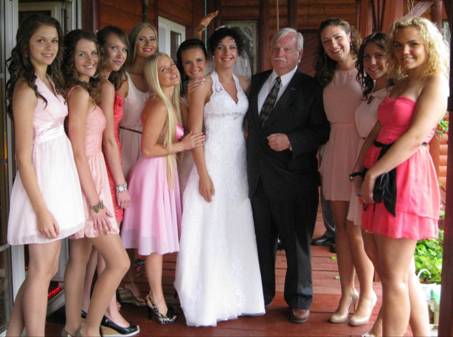
The article author, Kestutis Eidukonis, with the bride and her maids.
Marriage and death - these are the events to which ancient Lithuanian culture gave special attention to, and judging by the surviving customs and folklore, the most significant of these was the wedding, for it was on the family that the entire community depended on for survival, structure, and stability - not only of the community but of the whole nation. It is therefore understandable why the creation of a family - a wedding- receives so much attention in both ancient and present day Lithuanian culture.
- Bookmark :
- Digg
- del.icio.us
- Stumbleupon
- Redit it
- Posted by - (8) Comment
Oh, those old Lithuanian
wedding traditions

The article author, Kestutis Eidukonis, with the bride and her maids.
Marriage and death - these are the events to which ancient Lithuanian culture gave special attention to, and judging by the surviving customs and folklore, the most significant of these was the wedding, for it was on the family that the entire community depended on for survival, structure, and stability - not only of the community but of the whole nation. It is therefore understandable why the creation of a family - a wedding- receives so much attention in both ancient and present day Lithuanian culture.
One only needs to walk around old town Vilnius or Kaunas or any good size Lithuanian town on any given weekend to see wedding entourages accompanied by photographers posing for pictures at churches, bridges or any other landmark. These festivities occur everywhere in Lithuania. It is a wonderful sight for a country. It is usually a sign of confidence and hope in the future. Of course, traditions change and some people are reluctant to celebrate the wedding using some of these traditions but it was interesting to see them none the less and hope people continue to observe them.
I recently had the privilege of attending one of these special occasions in Žemaitiją in the wonderful towns of Veiverženai, and Švekšna I was invited to the wedding of Arturas and Žavinta, (her name means Enchanting) and I want to thank them and their families for sharing this beautiful experience with the me and the readers of VilNews.
At Žavinta's and Arturas's wedding, all the old traditions of a Lithuanian wedding came into play. All the actors, the matchmaker and his wife, the groom, the bride, the parents, bridesmaids, groomsmen, musician, large number of relatives and friends and most importantly, the children, had a part to play.
The day started at the bride's house with the bride getting dressed for the occasion being assisted by the brides maids. As the magic hour got close, the groom together with groomsmen arrived at the house, where, family and friends waited. The ceremonies began with the Matchmaker and Mrs Matchmaker (The matchmaker's wife) taking charge. The groomsmen are introduced to the bridesmaids. The boys tied flowers on the bridesmaids wrists and the girls in turn put a flower on the lapel of the boys. The future bride and groom in turn present a typical handwoven Lithuanian sash to the Matchmaker with the words Matchmaker - Liar.
The next part of the festivities was both comical and melancholic. The parents shared with everyone present their fondest memories of their children. Their first words, the lullabies they used to put them to sleep with and anything else memorable. The groom's mother then pinned a flower on her son's lapel, and in traditional Catholic families the couple is presented with a rosary as symbol of God's blessing. The bride and groom then bid farewell to their parents by kissing their hands. Tears flow copiously! Moms are usually very tearful - not so the fathers. Guests applaud and cry!
After this the couple proceed to the church where the mass is said and the couple exchange vows - pretty much like any other wedding ceremony. The couple also adopted the custom of releasing white turtle doves after the wedding ceremony outside the church.
After the church ceremonies the young couple along with their whole entourage hop into their cars and go on a noisy, horn blasting, few hour long trip. Photos are taken and rituals are performed. These combine a few old and new traditions - the old tradition consists of sorting through a bunch of stones labeled by the maid of honor with good and bad characteristics of the couple. Love jealousy, respect, hot temper, etc. The good stones are kept and put in a basket. The bad ones are tossed away. The stones have a special pagan significance - in old times they were considered messages to the gods. The newer tradition consists of locking two hearts together with a symbolic lock. The lock is often placed on a bridge and the key is discarded. Most Lithuanian bridges are covered with such locks. (I have also seen people removing their locks after a divorce or separation). The wedding party also uses this occasion to go visit close relatives who are ill or frail and could not make it to the festivities. The groom is also supposed to carry the bride across any and every bridge they come to.
Finally, according to old traditions it is time to go back to the house where the parents and the guests are eagerly awaiting. Weddings used to take place in one of parents' home. Now days, the celebrations are often held in a hall or in a place specially selected for its rural scenery or for the occasion. However, the decorations, like in the old days remain the same, the yard is decorated with birch branches flowers and other decorations. Our wedding took place in Alsė, a "kaimo sodyba" - a rural B & B.
After raising Cain on the roads and streets, the newly weds return to the hall where they are welcomed by their parents with the traditional gifts of bread and salt and water. (The bread symbolizes life, salt bitter moments and the water or wine to wash everything down) But before they are allowed to enter, they are required to undergo a variety of challenges. What would Lithuanian wedding be without jokes, and pranks? The organizer of all this is the irreplaceable wedding musician and the matchmakers who, up until the return of the young couple have been busy preparing for the first trials, an obstacle course for the groom to navigate while carrying his bride blindfolded - she is supposed to coach him where to walk. A baby doll for the bride to wash and diaper. Firewood for the groom to chop, a dish has to be broken and it will predict the number of children they will have, the bride will have to demonstrate that she knows how to peel potatoes. All this is accompanied with cat calls from the audience and commentary from the matchmakers as to how well or how ineptly the newly weds are performing their tasks. Upon completion of their tasks the newly weds request permission to enter the hall, but before the couple are allowed in they must get the approval of all the guests - who might want to challenge the couple. The maid of honor comes to the aid of the couple with a basket of candy and goodies to bribe the guests with. Many of the traditional matchmaker tasks have survived to this day but some are modified to fit the times. It is the matchmakers jobs to keep the evening flowing with toasts, songs, games and speeches. Everyone present is offered a chance to talk. The speeches have to be witty or sentimental, and they are always heartily applauded. The food was plentiful and delicious. Each table had official "bottle masters" and "happy attitude enforcers" assigned. The staff of the "Alsė" was great - pitchers were always full and platters of food just kept on coming. The place where the wedding took place was just outside the town of Švekšna it is a "Kaimo Turismo Sodyba" - a rural village garden type of an accommodation - with gazebos and other areas where guests young and old could socialize and imbibe. It also had places where everyone could rest, either in private rooms or communal bunk type accommodations. People with less stamina, were given semi-private accommodations - while the younger folks were provided with communal sleeping arrangements.
Around midnight - everyone was invited to a fire (normally a fireplace ) but in our case it was burning candles where everyone was asked to sprinkle amber dust on the flames and make a wish for the newly weds. Why Amber? Amber is considered to be the oldest, healing, spiritual rock with a large amount of organic energy. This magnetic stone, can still be found in the Baltic Sea, it is used for attracting love, carrying for and protecting happiness. It is symbolical invitation to an old Lithuanian ancestral spirit, to care for our young family and for our ancestors to reinforce the strength of the spirit of the family hearth fire. This magical fire now resides in Arturas and Zavinta and burns passionately within them.
The party continued till seven AM - With guests disappearing little by little till only the most energetic and hearty ones were left.
On the second day of the wedding - we were awakened by our colorful musician wearing a long wig. knocking on our door and insisting on us opening the door whilst he and his accordion serenaded us with his "wake up" song. Good natured threats were hurtled back and forth. Dire consequences were predicted for those who did not open up and wake up. Little by little, everyone woke up and gathered around for a breakfast of sour kraut soup served with potatoes and Kastynis ( A rich mix of butter and cream). This traditional hangover remedy , a visit to the sauna followed by a dip in the pond quickly revived everyone. The sauna and the dip in the pond was voluntary - though many took advantage of it.
Around noon - everyone was ready to start partying all over again. Everyone gathered at the banquet hall for second round of revelry. In the meantime, the bridal party decided that the matchmaker exaggerated the grooms qualities when he recommended the groom to the bride and her parents and that for being such a big liar, he needs to be strung up. The matchmaker at first tries to make excuses, but then when he sees that it is doing no good he starts to read his humorous last testament. This leaves everyone in stitches! The Matchmaker is than saved from hanging by the young bride - who ties her sash on him as a sign of respect and as sign of thanks for finding her a great husband. The wedding party goes along with the bride and decides that the matchmaker wasn't a liar, after all. He did match up these two wonderful young people and his services are still needed for the remaining large group of unmarried women. The matchmaker is allowed to live but now has to wear his matchmaker's sash around his neck as a reminder of the perils of his job.
Of course, there was still a lot of celebrating to do, games, dances and songs. The wedding went on till later that evening. But most importantly the Lithuanian Spirit was alive and well there. Happy guests, happy newly weds and most important of all - happy young eyes were watching all of this, for you see the young children were a part of this the whole time: This to them was a Fun Lithuanian Wedding!




- Bookmark :
- Digg
- del.icio.us
- Stumbleupon
- Redit it
- Posted by - (0) Comment
“The mass graves of Tuskulėnai”
A series of articles in 6 parts
TODAY PART 5 OF 6:
THE CHAPEL-COLUMBARIUM
 By Vincas Karnila, Associate editor
By Vincas Karnila, Associate editor
vin.karnila@VilNews.com
The focal point of the Memorial Complex of Tuskulėnai Peace Park is the Chapel-columbarium. The building with its exceptional architecture was intended to memorialize and honor the memory of the victims of Soviet terror. This chapel is a place of eternal rest for the remains of 717 people, killed between 1944 and 1947 in NKGB-MGB internal prison, which were found and exhumed during archeological research in the territory of Tuskulėnai Manor between 1994 and 1996 and in 2003.
To read more, go to our SECTION 10
- Bookmark :
- Digg
- del.icio.us
- Stumbleupon
- Redit it
- Posted by - (0) Comment
|
PART 5 OF 6 |
The CHAPEL-COLUMBARIUM

View from the Park level - Photo property of The Memorial Complex of the Tuskulėnai Peace Park. All rights reserved
The focal point of the Memorial Complex of Tuskulėnai Peace Park is the Chapel-columbarium. The building with its exceptional architecture was intended to memorialize and honor the memory of the victims of Soviet terror. This chapel is a place of eternal rest for the remains of 717 people, killed between 1944 and 1947 in NKGB-MGB internal prison, which were found and exhumed during archeological research in the territory of Tuskulėnai Manor between 1994 and 1996 and in 2003. The project authors chose the structure in the form of a burial mound which you can see from the above photo.

Main entrance - Photo property of The Memorial Complex of the Tuskulėnai Peace Park. All rights reserved
The Chapel-columbarium is a barrow-shaped building, the underground part of which there is a dome-shaped chapel surrounded by a gallery of crypts with coffins bearing the remains of the victims exhumed from the territory of Tuskulėnai Peace Park. The remains were brought to the crypt on the All Souls’ Day in 2004.

Photo property of The Memorial Complex of the Tuskulėnai Peace Park. All rights reserved
As we said, the Chapel-columbarium is the focal point of The Memorial Complex of the Tuskulėnai Peace Park and the remains of the victims that are interned inside is the focal point of the Chapel-columbarium. The first time I went inside to visit with the people who have become one of the symbols of Soviet terror, I honestly can’t put into words the myriad of emotions that overcame me. Quite often I am in the KGB Museum. When I am in there I feel anger towards the people that tortured and killed my fellow country men and women. In the Chapel-columbarium it is not possible for me to feel anger. It is also not possible for me to completely describe my emotions but one is of great sadness for not only how the lives of these people ended but how the Soviets disposed of their bodies. The one thing that really strikes me is when I look at all the small caskets that hold the remains of these people and look at the numbers on them is that - These people had names, they were people.
Please look at casket 048 in the photo above.
This is someone’s son or daughter, perhaps also someone’s brother or sister. It also could be someone’s wife or husband or father. This person also had friends and colleagues at work. At one time this person had a name – Now they are 048. Now they are known only to God.
As I said, it is very difficult to put my emotions into words but if you have even the smallest understanding of what I’m saying about casket 048 you will begin to appreciate the solemn power this place can have over you.
As the bodies were exhumed from the massed graves, no one knew the identity of each of the skeletal remains. To look at each, they did not know who was a Lithuanian Partisan that went to the forests to take up armed resistance against the brutal tyrannical power that had taken their country’s freedom away, who was a member of the Polish Armia Krajowa, who had collaborated with the Nazis or who was a deserter from the Soviet Army.
As one person put it, “it wasn’t possible to separate the bones into two neat piles — patriots here, criminals there”.
All that was known was that there were now more than 700 bodies that needed to be buried in some civilized way. In a civilised society, when a person dies, civilised people burry the deceased in a civilised way. This was and is the purpose of the Tuskulenai Chapel-columbarium and the Memorial Complex of Tuskulėnai Peace Park. It provides a civilised final resting place to these victims of Soviet terror whose individual identities and what they did during life are now known only to God.
About thirty minutes before I entered the Chapel-columbarium I had read the letter of farewell written by Lithuanian partisan leader Bronius Eiva to his wife. All the time I was looking at the numbers on all the caskets his words were repeatedly going through my mind
“Please find out when I was shot or hanged and where they bury me. Dig me up and take me to Šeta cemetery.”
With his words echoing through my head I could not help but think that unfortunately they could not bury Bronius in Šeta cemetery because they didn’t know which body was his but at least they were able to dig him up and give him the best possible burial under the circumstance, have him blessed by a Holy person of the Church and give his family a place to come visit him.
Dear readers, for those of you that live outside of Lithuania I would highly recommend that during your next visit to make it a point to go to first to the KGB Museum and then to The Memorial Complex of the Tuskulėnai Peace Park and go inside the Chapel-columbarium. For our readers that live in or near Lithuania I would highly recommend you also make the time to do the same. While inside your thoughts and reasons for visiting the people that were taken away from their friends, families and countries in such a violent manner will be your own but I am quite sure that you will feel the solemn power this place will have over you
This memorial and sacral building was designed with regard to the surrounding landscape: it looks like a barrow from the park side, and the main entrance is established on its steep, riverbank side. The main material used for the construction was concrete, which suits the underground building due to its durability; and its stark decorative properties reflect the tragic destiny of the people buried there.

Photo property of The Memorial Complex of the Tuskulėnai Peace Park. All rights reserved
The authors of the chapel-columbarium project were: Vytautas Edmundas Čekanauskas, Algirdas Umbrasas, Lina Masliukienė, Gitenis Umbrasas, Gediminas Karalius, Marius Šaliamoras, and Jūras Balkevičius. The planning of the project began in 1996, and the chapel was built in 2003-2004. In 2009, the dome of the chapel-columbarium was decorated with an arched mosaic “Trejybė” (Trinity) created by the painter and monumental artist G. Umbrasas. It pictures the intertwined wings of three birds: a swan, a hawk and an owl, symbolizing Fate, Happiness and Freedom. In the same year, the barrow was capped with a metal crown created by sculptor G. Karalius.

“Trejybė” (Trinity) - Photo property of The Memorial Complex of the Tuskulėnai Peace Park. All rights reserved
In 2006, the Seimas of the Republic of Lithuania added to the list of memorial days by announcing the designation of 28th September as Tuskulėnai Victims Memorial Day. This day is commemorated every year in The Memorial Complex of Tuskulėnai Peace Park.
Obviously the Chapel-columbarium is locked at all times but this is absolutely no problem. To get inside the Chapel-columbarium, where the remains of the victims of the Soviet totalitarian regime rest in peace, simply go to the visitor center which is located on the grounds in the building marked Žirmūnų Gatvė 1N.

Information Center at Žirmūnų Gatvė 1N
Photo property of The Memorial Complex of the Tuskulėnai Peace Park. All rights reserved
Tell the staff that you would like to go inside the Chapel-columbarium and they will be more than happy to escort you inside. As I said before, every member of the staff here are wonderful people and they will enjoy sharing all the information with you. In fact I can honestly tell you that meeting with and talking to the staff here will be one of the highlights of your visit. Every one of them is absolutely fantastic.
Look for the next article
Part 6 of 6
The SECRETS OF TUSKULĖNAI MANOR
Dear readers
WE NEED YOUR HELP
Dear VilNews readers, we need your help. As we have said, the victims that were executed in the NKGB–MGB internal prison in between 28 September 1944 and 16 April 1947 were buried in secret mass graves in the territory of the Tuskulėnai Manor. These victims have been found, their bodies recovered, given the dignified burial they never received and their souls have been blessed by a Holy person of the religion the worshipped.
26 May 1947, following the order of the Presidium of the Supreme Council of the USSR, the death penalty was abolished.
On 12 January 1950, the Presidium of the Supreme Council of the USSR passed a decree re-instating the death penalty. Between October 1950 and July 1952, 182 people sentenced to death were executed at Vilnius NKGB–MGB internal prison.
Their place of burial is still not known.
After July 1952 to 1961 executions continued pursuant to the 1926 Criminal Code Article 58 of RSFSR.
The burial place of these victims is still unknown.
The 1926 Criminal Code Article 58 of RSFSR was terminated in 1961 but executions continued.
The burial place of these victims is still unknown
Dear readers we would like to find where these people are buried, recover their bodies, give them the dignified burial they never received and have them blessed by a Holy person of the Religion they worshipped.
This is where we need your help. The NKVD and NKGB–MGB officers that oversaw these executions are now all dead. What ever records and documents which still exist are most likely locked away in a vault somewhere in the Russian Federation and it would seem highly unlikely that anyone in the Russian Federation would be kind enough allow access to these documents and records so that we could find out the location of the burial sites or simply tell us where these people are buried.
We know that there are people out there that know the location of some of these burial sites. Maybe it is a person that processed the documents, maybe it is some one that was just a rank and file soldier that was ordered to drive the truck that transported the bodies or was ordered to dig the trenches for the graves, maybe it is a colleague of one of these people or maybe it is the bartender that heard some of these people talk of it one night. The possibilities are endless.
Maybe none of these people with first hand knowledge of the burial sites are still alive. In that case we are sure that there are people out there with second hand or even third hand information. To have first hand knowledge of these executions would weigh very heavily on any civilized person’s heart and it is very possible that after carrying this weight inside them for many years they finally felt the need to free themselves from this burden they carried inside and told some one.
If you have any information at all, any information of any kind – Please tell us.
It is not important to us how you know, who it was, what they did or who told you.
None of this is important.
The only thing that is important is that we find where the executed people are buried.
This is all we care about.
What we want to do is best explained in the words from Bronius Eiva’s farewell letter he wrote to his wife while waiting his execution while in the prison of Ukmergės Peoples Commissariat for Internal Affairs.
“Please find out when I was shot or hanged and where they bury me.
Dig me up and take me to Šeta cemetary.”
This is all we want to do – Find where they are buried, dig them up and then give them a proper burial but we can only do this with your help.
All information will be kept strictly confidential
We are not concerned with who or what
We are only concerned with where these people are buried
If you have any information of any kind please contact:
The Memorial Complex of Tuskulenai Peace Park
Žirmūnų Gatvė 1F,
LT-09239, Vilnius
Lithuania
Telephone: +370 5 275 1223
E-mail. tuskulenai@genocid.lt
You can also contact me at vkvilnius-tuskulenai@yahoo.com
We sincerely thank you for your help.
Su pagarbe
Vincas Karnila
- Bookmark :
- Digg
- del.icio.us
- Stumbleupon
- Redit it
Join our “Historic Route 66 Photography Forum”
- Posted by - (5) Comment

By Rimgaudas P. Vidziunas aka "Rim", Mesa, Arizona, USA
At a book signing that I was photographing earlier this week, I was surprised to hear that so many Europeans come to America just to tour Historic Route 66 in tour buses, rented cars and even Harley Davidson Motorcycles. This inspired me to create "Historic Route 66 Photography Forum" for everyone to share their pictures and memories.
https://www.facebook.com/groups/HistoricRoute66PhotographyForum/
We share a passion for Historic Route 66, sharing our images, imagination, memories of the "Mother Road" for the world to enjoy.
U.S. Route 66 (US 66 or Route 66), also known as the Will Rogers Highway and colloquially known as the Main Street of America or the Mother Road, was a highway within the U.S. Highway System. One of the original U.S. Highways, Route 66 was established on November 11, 1926—with road signs erected the following year.[2] The highway, which became one of the most famous roads in America, originally ran from Chicago, Illinois, through Missouri, Kansas, Oklahoma, Texas, New Mexico, Arizona, and California, before ending at Los Angeles, covering a total of 2,448 miles (3,940 km).[3] It was recognized in popular culture by both a hit song and the Route 66 television show in the 1960s.
Route 66 served as a major path for those who migrated west, especially during the Dust Bowl of the 1930s, and it supported the economies of the communities through which the road passed. People doing business along the route became prosperous due to the growing popularity of the highway, and those same people later fought to keep the highway alive in the face of the growing threat of being bypassed by the new Interstate Highway System.
Route 66 underwent many improvements and realignments over its lifetime, and it was officially removed from the United States Highway System on June 27, 1985[4] after it had been replaced in its entirety by the Interstate Highway System. Portions of the road that passed through Illinois, Missouri, New Mexico, and Arizona have been designated a National Scenic Byway of the name "Historic Route 66", which is returning to some maps.[5][6] Several states have adopted significant bypassed sections of the former US 66 into the state road network as State Route 66.

- Bookmark :
- Digg
- del.icio.us
- Stumbleupon
- Redit it
- Posted by - (0) Comment

Klaipėda crisis centre for women –
a pioneering example for such centres worldwide?
I love that Lithuanians feel strongly enough about stopping violence against women by building a beautiful haven for abused women to heal in

______________________________
Poland and Lithuania were amongst the worst for child abuse, violence against women and homophobia

______________________________
Huge achievement ♥
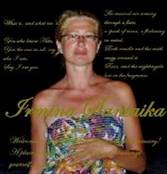
______________________________
Wonderful concept!

- Bookmark :
- Digg
- del.icio.us
- Stumbleupon
- Redit it
- Posted by - (0) Comment
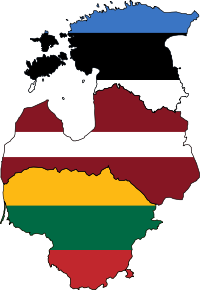
Baltic countries must
stop silly cock-fighting
Tõnis Tamme, attorney and a partner of pan-Baltic alliance of commercial law firms TRINITI writes about how the Baltic countries could and should cooperate better for the common good.
One can often hear ambitious words in Estonia – that the real opportunities of our enterprises for the next decades are related to China, India, South-East Asia and other far-away markets. Indeed, the global economic crisis made Baltic enterprises adopt a wider view of export markets than before. It was a positive change for the small economy of the economic boom period, as it had been too focused on domestic consumption. On the other hand it’s not probable that the exotic markets would be the driving force carrier of the economies of Lithuania, Latvia or Estonia in near future. Rather, the much-discussed globalisation stage entails regionalisation, resulting in widening those mental borders that we perceive to determine “our” home market.
No ground for snobbism
The competition among the Baltic States for the name of the “best port” for foreign investments is growing. All three countries have their own perceivable and developed advantages – Lithuania has the largest domestic market, Latvia is logistically in the centre of the region and Estonia has pulled somewhat ahead of others with the structure of its economy and key figures.
- Bookmark :
- Digg
- del.icio.us
- Stumbleupon
- Redit it
- Posted by - (0) Comment
Lithuania remains
BBB rated by S&P
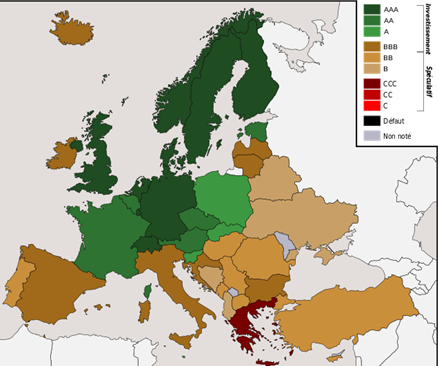
Lithuania’s sovereign credit rating was this week affirmed by Standard & Poor’s (S&P), which cited the nation’s commitment to budget policies that promote sustainable economic growth.
S&P kept its stable outlook on Lithuania’s BBB rating, its second-lowest investment grade, on par with Russia and Bulgaria.
- Bookmark :
- Digg
- del.icio.us
- Stumbleupon
- Redit it
- Posted by - (1) Comment
Lithuania remains
BBB rated by S&P

Lithuania’s sovereign credit rating was this week affirmed by Standard & Poor’s (S&P), which cited the nation’s commitment to budget policies that promote sustainable economic growth.
S&P kept its stable outlook on Lithuania’s BBB rating, its second-lowest investment grade, on par with Russia and Bulgaria.
“The Lithuanian government has made significant progress in consolidating the public finances,” the ratings company said. “We expect fiscal deficits to continue declining over the medium term and for consolidation efforts to be helped by a forecast return to strong economic growth.”
Lithuania plans to narrow this year’s budget deficit to within 3 percent of gross domestic product from 5.5 percent in 2011. After expanding 5.9 percent last year, the economy will grow 3 percent in 2012, the central bank predicts.
The yield on Lithuania’s 2022 dollar bond fell 4 basis points to 4.15 percent as of 1:25 p.m. in Vilnius.
There are “significant risks” that this year’s fiscal shortfall will be “marginally” higher than the government’s target after the first-half deficit reached about 2.4 percent of full-year estimated GDP, S&P said.
“Fiscal prudence is particularly important for Lithuania as its currency board affords it no meaningful monetary or exchange rate flexibility,” it said.
S&P, which also raised the country’s short-term foreign and local currency rating to A-2 from A-3, warned that rising gas and heating prices may spur price growth, hindering plans to meet inflation criteria for euro adoption.
“Whatever the case, we believe that Lithuania’s authorities may hesitate to apply for euro-zone membership for as long as the economic and debt crises in the euro zone persist,” the ratings company said.
- Bookmark :
- Digg
- del.icio.us
- Stumbleupon
- Redit it
- Posted by - (0) Comment
AAA rated nations worldwide:
8 of 10 top rated nations
located in North Europe!
|
Least risky countries, Score out of 100 Country risk rankings (June 2012) Source: Euromoney country risk http://en.wikipedia.org/wiki/Credit_rating |
|||
| Rank | Previous | Country | Overall score |
| 1 | 1 | Norway | 90.37 |
| 2 | 2 | Switzerland | 88.83 |
| 3 | 3 | Singapore | 88.03 |
| 4 | 4 | Luxembourg | 87.90 |
| 5 | 4 | Sweden | 86.79 |
| 6 | 5 | Finland | 84.30 |
| 7 | 7 | Canada | 84.26 |
| 8 | 8 | Denmark | 83.52 |
| 9 | 9 | Netherlands | 83.07 |
| 10 | 7 | Germany | 82.24 |
It may surprise many that eight of the top ten countries in the world enjoying AAA rating from Standard & Poor’s are located in Northern Europe, and that all four Scandinavian countries are among these eight. The only non-European countries on this distinguished list are Canada and Singapore, while countries like the U.S., Japan and China have to accept lower rank.
- Bookmark :
- Digg
- del.icio.us
- Stumbleupon
- Redit it
- Posted by - (0) Comment
AAA rated nations worldwide:
8 of 10 top rated nations
located in North Europe!
| Rank | Previous | Country | Overall score |
| 1 | 1 | 90.37 | |
| 2 | 2 | 88.83 | |
| 3 | 3 | 88.03 | |
| 4 | 4 | 87.90 | |
| 5 | 4 | 86.79 | |
| 6 | 5 | 84.30 | |
| 7 | 7 | 84.26 | |
| 8 | 8 | 83.52 | |
| 9 | 9 | 83.07 | |
| 10 | 7 | 82.24 | |
It may surprise many that eight of the top ten countries in the world enjoying AAA rating from Standard & Poor’s are located in Northern Europe, and that all four Scandinavian countries are among these eight. The only non-European countries on this distinguished list are Canada and Singapore, while countries like the U.S., Japan and China have to accept lower rank.
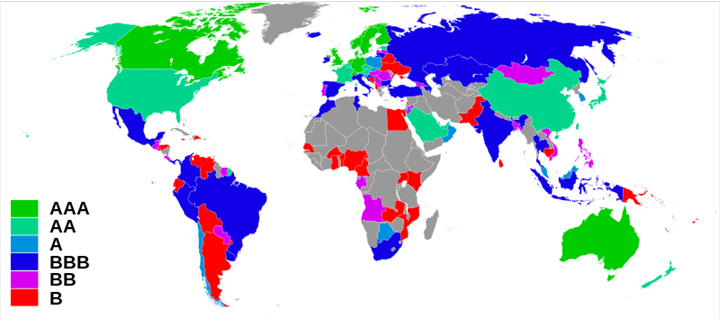
Click on the map for higher resolution.
What is a 'credit rating'?
A credit rating evaluates the credit worthiness of a debtor, especially a business (company) or a government. It is an evaluation made by a credit rating agency of the debtor's ability to pay back the debt and the likelihood of default.
Credit ratings are determined by credit ratings agencies. The credit rating represents the credit rating agency's evaluation of qualitative and quantitative information for a company or government; including non-public information obtained by the credit rating agencies analysts.
Credit ratings are not based on mathematical formulas. Instead, credit rating agencies use their judgment and experience in determining what public and private information should be considered in giving a rating to a particular company or government. The credit rating is used by individuals and entities that purchase the bonds issued by companies and governments to determine the likelihood that the government will pay its bond obligations.
A poor credit rating indicates a credit rating agency's opinion that the company or government has a high risk of defaulting, based on the agency's analysis of the entity's history and analysis of long term economic prospects.
Sovereign credit rating
A sovereign credit rating is the credit rating of a sovereign entity, i.e., a national government. The sovereign credit rating indicates the risk level of the investing environment of a country and is used by investors looking to invest abroad. It takes political risk into account
The table above shows the ten least-risky countries for investment as of June 2012. Ratings are further broken down into components including political risk, economic risk. Euromoney's bi-annual country risk index monitors the political and economic stability of 185 sovereign countries. Results focus foremost on economics, specifically sovereign default risk and/or payment default risk for exporters (a.k.a. "trade credit" risk).
A. M. Best defines "country risk" as the risk that country-specific factors could adversely affect an insurer's ability to meet its financial obligations.
Short-term rating
A short-term rating is a probability factor of an individual going into default within a year. This is in contrast to long-term rating which is evaluated over a long timeframe. In the past institutional investors preferred to consider long-term ratings. Nowadays, short-term ratings are commonly used.
First, the Basel II agreement requires banks to report their one-year probability if they applied internal-ratings-based approach for capital requirements. Second, many institutional investors can easily manage their credit/bond portfolios with derivatives on monthly or quarterly basis. Therefore, some rating agencies simply report short-term ratings.
Credit rating agencies
The largest credit rating agencies (which tend to operate worldwide) are Dun & Bradstreet, Moody's, Standard & Poor's and Fitch Ratings.
Other agencies include A. M. Best (U.S.), Baycorp Advantage (Australia), Egan-Jones Rating Company (U.S.), Global Credit Ratings Co. (South Africa),Levin and Goldstein(Zambia),Agusto & Co(Nigeria), Japan Credit Rating Agency, Ltd. (Japan), Muros Ratings (Russia alternative rating agency), Rapid Ratings International (U.S.). and Credit Rating Information and Services Limited (Bangladesh)
- Bookmark :
- Digg
- del.icio.us
- Stumbleupon
- Redit it
VilNews e-magazine is published in Vilnius, Lithuania. Editor-in-Chief: Mr. Aage Myhre. Inquires to the editors: editor@VilNews.com.
Code of Ethics: See Section 2 – about VilNews. VilNews is not responsible for content on external links/web pages.
HOW TO ADVERTISE IN VILNEWS.
All content is copyrighted © 2011. UAB ‘VilNews’.

 Click on the buttons to open and read each of VilNews' 18 sub-sections
Click on the buttons to open and read each of VilNews' 18 sub-sections 







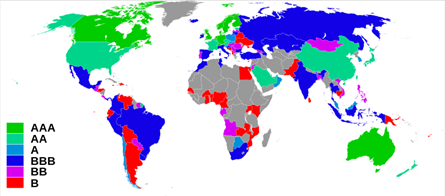
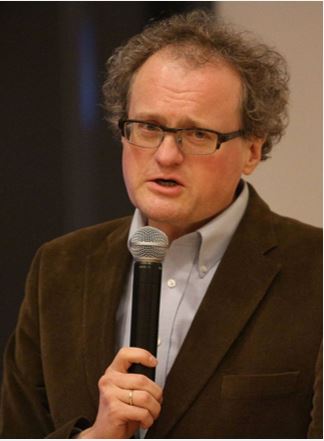
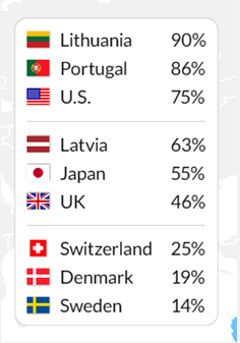
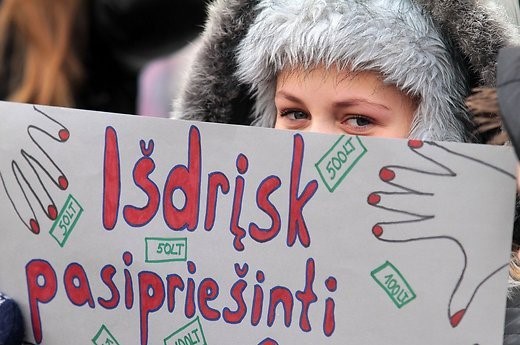


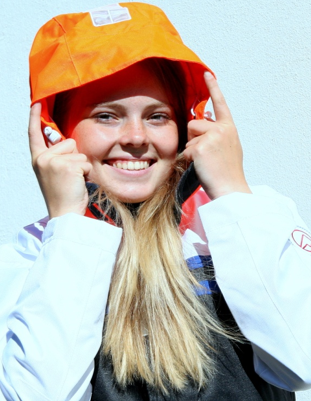
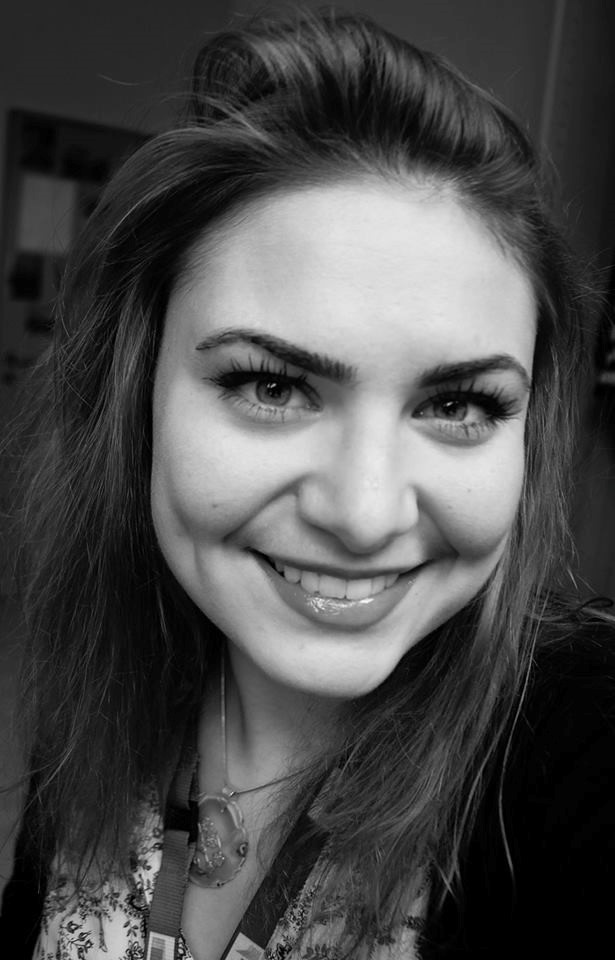
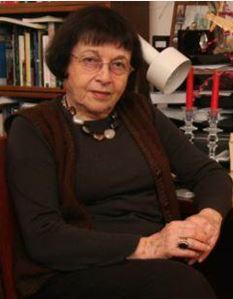
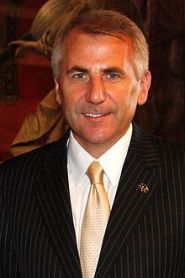
.jpg)
